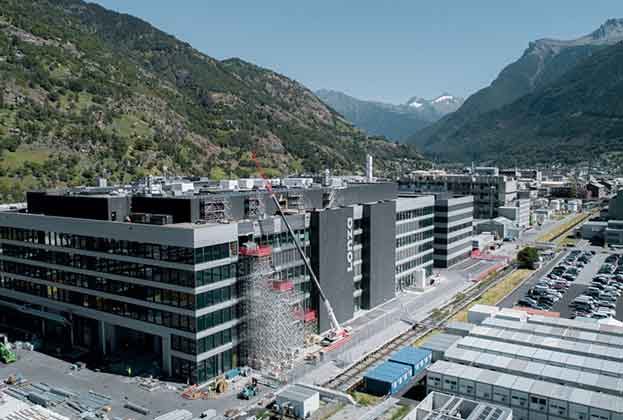A key and mature life science market in the US
The Raleigh-Durham market is at the forefront of rapidly emerging life science clusters in the US. Raleigh is home to the country’s most prominent research park, Research Triangle Park (RTP), known for its high-tech facilities and upper echelon of life science tenants. Approximately 75% of life science companies in North Carolina are based in Research Triangle Park. The park is situated on 7,000 acres and boasts over 22 million square feet of lab space which is home to more than 300 life science companies. RTP is occupied by Biogen, Eli Lilly, Pfizer, Bayer Pharmaceuticals and agencies such as the Centers for Disease and Control and Prevention (CDC).
The RTP submarket is seeing an influx of new developments in the lab and R&D product class as life science companies continue to flock to the market. Announced at the beginning of the year, Starwood Capital Group and Trinity Capital Advisors planned a joint development referred to as Spark LS, a $1 billion life science campus in the Research Triangle submarket comprised of 12–15 buildings across 109 acres dedicated to lab and bio spaces featuring a STEM education centre. Additionally, one of the world’s leading biotechnology companies, Amgen, recently broke ground on a biomanufacturing plant located in Holly Springs. Amgen’s biomanufacturing plant is anticipated to cost $550 million dollars and encompass 350,000 RSF, expecting to be fully operational sometime in 2025.
It is more important than ever for life science companies to be strategic in their real estate strategy
Brianna Friedman, Senior Research Analyst, Rutherford, NJ
The region has an enhanced draw due to the constant influx of talented graduates coming from three world-class research institutions, North Carolina State University, Duke University and the University of North Carolina at Chapel Hill, as well as other traditional colleges nearby. In addition to an educated workforce, the Triangle is seeing growing demand because of its lower cost of doing business and lower cost of living that employers are keen to take advantage of.
The war for talent has heightened as the country emerges from the pandemic and it is more important than ever for companies to be strategic in their real estate strategy and pick markets with a booming talent pipeline and a metro area that draws employees due to lower living costs and amenities. Life science users will continue to relocate and grow their footprint in Raleigh-Durham as they are drawn in by the robust development pipeline underway, friendly business atmosphere and available government incentives.
View from the US
Venture capital (VC) funding in life sciences has continued to grow at an exponential rate on a national level. In the Raleigh-Durham metro region, VC funding jumped 118% from 2020 to 2021. This metro region’s life science industry is made up of 14 sub-sectors, with Drug Discovery, Clinics/ Outpatient Services, Other Agriculture, and Biotechnology among the most funded. Life science sub-sector Drug Discovery received the largest amount of funding in 2021 at $173.2 million or 19.1% of 2021’s total in Raleigh-Durham. The second most funded was Clinics/Outpatient Services at $121.5 million or 14.3%.
VC funding activity remains steady in 2022 with the majority of deals being Later Stage and Early-Stage VC funding. Life science companies such as BioMason, Vestaron and Inceptor Bio are some of the largest funded for the beginning of this year. In late February, BioMason raised $65 million in funding from 2150 and Celesta Capital to accelerate their biocement technology platform in hopes to reduce the global carbon emissions from the concrete industry. Reviewing the trends in capital raised, in terms of type of deals and the volume, presents a great indication of the type of companies that will grow in the future and the type of real estate required in Raleigh-Durham.
Read the articles within Spotlight: Life Sciences – Trends & Outlook below.
.jpg)






